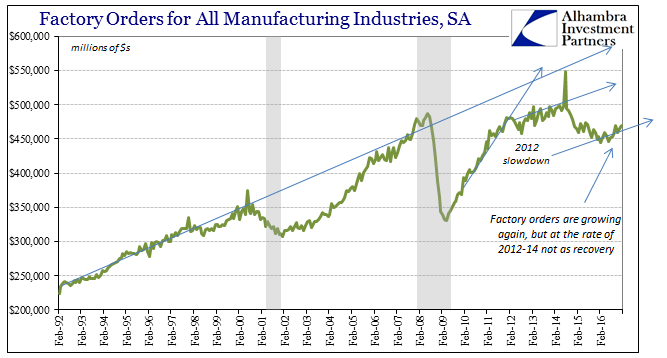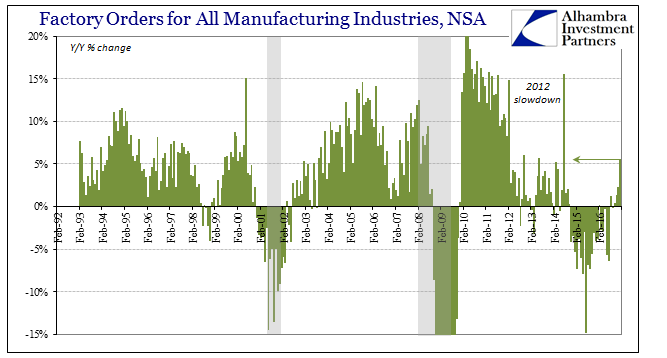The ISM Manufacturing PMI registered 57.7 in February 2017, the highest value since August 2014 (revised). It was just slightly less than that peak in the 2014 “reflation” cycle. Given these comparisons, economic narratives have been spun further than even the past few years where “strong” was anything but.
The ISM’s gauge of orders increased to the highest level in just over three years, while an index of production posted its best reading since March 2011. The data were preceded by recent regional indicators showing similar strength that has prevailed since the presidential election as companies begin to step up investment and the global economy stabilizes.
“Things look good at this point,” Bradley Holcomb, chairman of the ISM survey committee, said on a conference call with reporters. “I don’t see anything here, or in the winds, that would suggest we can’t continue with this kind of pace going forward in the next few months.”
The comparisons to 2014 should instead induce caution. In terms of sentiment, there was nothing in those 2014 PMI’s to suggest what was about to happen. There was, however, in terms of so-called hard data of accounts like durable goods and factory orders.
Like the ISM PMI, factory orders in January 2017 (+5.5% Y/Y) rose at the fastest pace since 2014. It seems to be confirmation that the manufacturing sector has not only moved past the 2-year long manufacturing recession but may actually be breaking into full growth. That idea, however, is easily dispelled by those very comparisons to 2014 rather than 2011 (or before). In other words, while the growth rate of 5.5% might sound impressive given the steady low-scale contraction of those two years, it represents growth at the post-2012 pace rather than growth at a normal pace (therefore “not growth”).


It’s as if the “rising dollar” manufacturing contraction ended and the factory sector simply resumed its lackluster expansion as it was before it. That’s not how this is “supposed” to work, where the economy or any important sector falls off for years at a time and then just goes back to as before. There is typically symmetry to these processes, where after contracting for so long that sector will rapidly expand to something more like normal.














Leave A Comment